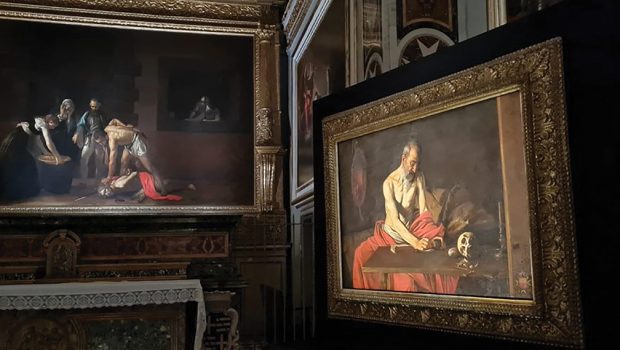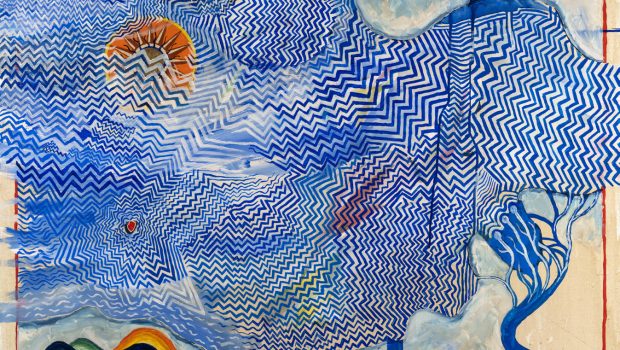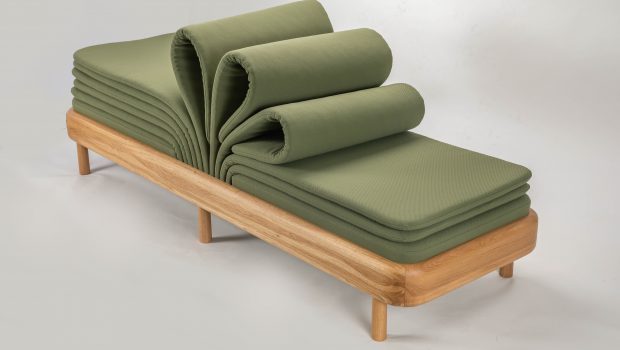10 Years Later
Wioletta Kulewska, or Violet, as she is known to most people in the art circle, has been living in Malta for ten years and has become well-known and respected for her interior architecture and design practice. However, not many people know her as an able and sensitive painter, whose works are characterised by a strong sense of not only colour and texture but also shape and form.

Perhaps it is inevitable for some to try and draw a comparison to Kulewska’s design practice and her distinct sense of the aesthetic, but she explains that her relationship with painting is very different and much stronger than her relationship to design. “I believe my design work is more paint-related than my paintings are related to design.”
Coming from Poland, Kulewska recounts how culture and the arts have played a fundamental role in her country, helping creatives survive the worst moments in their history. Having been trained at the Polish School of Fine Arts, she explains how budding artists launched their careers as colourists, following the ‘Capist’ and ‘Fauvist’ painting aesthetic. Upcoming artists were also strongly influenced by artists such as Władysław Strzemiński, whose aim was not solely to transform the so-called ‘High Arts’ but to also transform ‘Design’, in the broader sense.


Entitled Embedded, Kulewska’s debut solo exhibition in Malta is comprised of a series of abstract, biomorphic paintings that constitute visual interpretations of Maltese fossils – mainly, marine organisms – with which she has been fascinated for many years. She explains how, through her research and process, she produced countless sketches, studies and photographs and how the fossil was first discovered, evaluated and recorded and then taken back to the studio for further investigation.“I’ve been working on this project for such a long time that I’ve almost become a palaeontologist/painter.
“When you go for a walk around Malta you find a number of beautiful and well-preserved fossils imprinted on rock surfaces. They have different shapes, patterns and textures and they were also living organisms, once upon a time. So I decided to study them closely and give them a new life and meaning. I want audiences to recognise their beauty, through painting, but also to reflect on subjects like embodiment, resemblance and disappearance.
“The topography of the Maltese Islands is very different from the Polish landscape and climate. Perhaps not many locals would find the subject of fossils fascinating, but I found that there was much to reflect upon during the course of this project: life, death, time – past and present, Earth’s natural phenomena or simply the nature and interpretation of her originality in a unique way.”
This project was also developed during a course Kulewska followed at Slade School of Fine Arts, last summer; a project which she decided to pursue and develop further on her return to Malta. Back in her studio, she worked on a series of sculptures to recreate the elemental process of fossilisation, then on print reliefs and then finally she could execute the paintings – a process which, she confesses, was both long and challenging.
In this collection, Kulewska uses the oil medium, gold leaf and a technique of printing plaster sculpture directly onto the canvas in an attempt to recreate the elemental process of fossilisation. The patterns of marine fossils are used as a starting point for her explorations in paint and print reliefs. She admits that the theme of the exhibition, per se, no longer holds the same level of importance, in that she hopes visitors and audiences will experience her work, rather than focus on the subject, and interpret the work as such. “The work included in this exhibition will highlight my personal interpretations. My contemporary shapes, use of colour and visual language are a stark and playful contrast to that which is embedded on our Maltese shores.”
Kulewska talks of how this project has been in the pipeline for quite a while. However, she made a conscious decision to debut her work during Valletta 2018: European Capital of Culture – the year that marks the 10-year anniversary of her making Malta her home. “It was important to me to show my work during Valletta’s Capital of Culture year,” she says, going on to explain how this is a self-funded project that has been unravelling since as early as 2015. “Painting as a practice is a very expensive and time-consuming profession and it takes a very long time to prepare a show such as this. I’ve been preparing for this exhibition practically since 2015. You need to make enough money to be a painter, to buy materials so you can paint and show your work and live from one exhibition to another.”
This exhibition is also very important to Kulewska because not many people in Malta know her as a painter. She has, in fact, been painting for as long as she can remember, having started her education in an art community centre at the age of 10. “Since I was a very shy child, I found serenity in painting. I continued a proper art education both at High School and at the Academy of Fine Arts in Poland.”
Kulewska’s exhibition will be launched at the beginning of February and is being held at the Palazzo de la Salle – or Malta Society of Arts, as it is better known nowadays – which is reputedly one of the most beautiful palaces in Valletta, as well as Malta’s oldest institution for the promotion of arts and crafts. In fact, the location for her debut show was a decision which took much mulling over.
However, she says that her choice – the newly refurbished upper galleries of Palazzo de la Salle – is a ‘dream location’ for the exhibition. “Since my paintings have so many hidden layers, I found Palazzo de la Salle a perfect space for this show, because of its rich history. I want the audience to come to the gallery space to meditate. The paintings I’ve created have no words and they don’t need any explanation. I want the audience to look at those paintings and find their own interpretations and answers. Artworks should have an independent life and should tell us their own story. These paintings, although contemporary, are deeply embedded in Maltese history – just like the building itself.”
Embedded is curated by Sandra Zaffarese. It is showing at The Upper Galleries, Palazzo de la Salle, 219 Republic Street, Valletta from 1 February, to 1 March and will be open Mondays to Fridays between 8.30 am and 7 pm and on Saturdays from 8.30 am to 1.30 pm.








